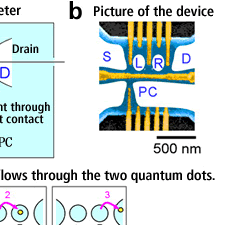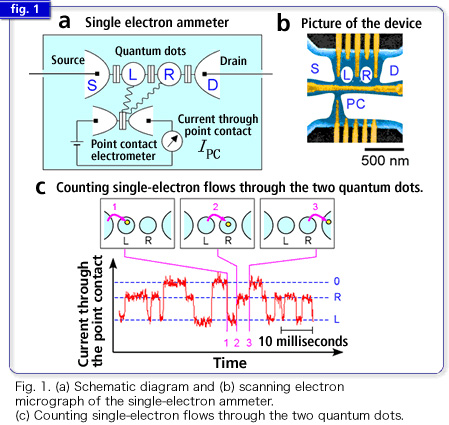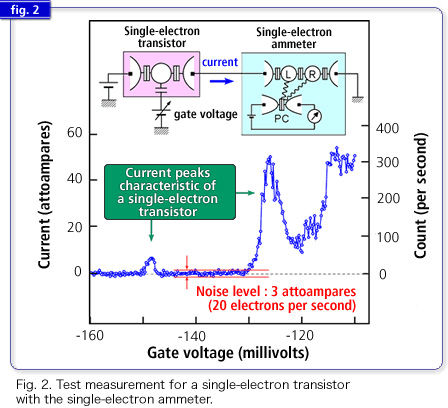Single-Electron Ammeter based on Bidirectional Counting of Single-Electrons
-A novel highly sensitive current meter applicable for nanoelectronics studies -

NTT Basic Research Laboratories, in collaboration with the Tokyo Institute of Technology and the Japan Science and Technology Agency, has successfully demonstrated an extremely sensitive ammeter, in which the flow of one electron in either direction can be detected in real time. The single-electron ammeter can be used to measure extremely small currents that cannot be measured with any existing meter and to analyze the motion of individual electron. It will be useful for studying nanoelectronics and developing quantum information technologies.
This work will be published in Science magazine, June 16 issue.
=> Press Release
=> Quantum Solid State Physics Research Group
Single-electron ammeter
Conventional sensitive ammeter requires millions of electrons to detect as a current. Our single-electron ammeter with single-electron sensitivity integrates two quantum dots and a point contact in a semiconductor device (Fig. 1a). An electron entering or escaping from one of the quantum dots influences the current flowing through the point contact, and thus the change in the electron occupation in a quantum dot can be monitored. Two quantum dots are required in order to identify the direction from which the electron has entered or to which it has escaped. This bidirectional counting is essential for making a single-electron ammeter.

When an electron travels through the two quantum dots, the current through the point contact shows three different values depending on the location of the electron. Jumping between these values can be understood as an electron entering the left dot (1), moving to the right dot (2), and escaping to the right lead (3). Average current can be obtained by counting the net electron flow.

The data show current peaks characteristic of a single-electron transistor, with the measured current in the range of a few to tens of attoampares (atto means 10-18; one-billionth of a billionth), which is well below the detection limit of existing current meter. The current noise, 3 attoampares peak-to-peak, is more than three orders of magnitude smaller than that in a conventional current meter.










